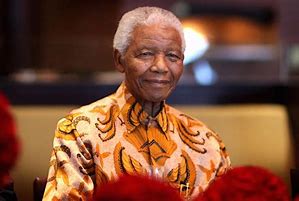Transformational Leadership.
Leadership…. Is one style better than another?
The term “transformational leadership” was first coined by sociologist James Downton in 1973. The concept was then further developed by leadership experts, including Bernard Bass (1985) who explored the psychological mechanisms for transformative leadership.
The easiest way to describe transformation leadership is to compare it with the opposite, that is, transactional leadership.
With transactional leadership the boss expects something in return. As if making deals as they go, the boss sets short term goals and rewards those who contribute and follow the rules. This kind of structure is less concerned with inspiring people and more about directing behaviour with rewards and punishments.
In contrast, the transformational leader is less interested in controlling people’s efforts towards short term goals. Rather, the transformational leader is more focussed on coaching people’s best performance towards long-term outcomes. Transformational leaders inspire, motivate and provide a big picture vision beyond short term Performance Indicators. The result is a kind of blend of personal development and professional development, as people step up to be more their best selves.
Transformational leadership examples
Historically, Nelson Mandela is an example of a transformational leader. In post-apartheid South Africa, he convinced an entire generation to put aside their natural, short term desire for retribution and inspired the population to focus on the longer-term goals of truth and reconciliation.
With this ability to encourage people to focus on the big picture and ‘imagine better,’ such leaders are usually considered highly charismatic.

In the business world Steve Jobs is often considered a transformational leader. Here is a famous example. Steve Jobs had a vision. He saw a future where every home would have its own computer. At the time most people thought this idea was madness, and so Jobs knew he needed a genuine marketing genius by his side.
Unfortunately, the world’s most successful marketing executive, John Sculley, was very happy at Pepsi Cola. Scully had successfully increased Pepsi’s market share against Coca-Cola, and he was not about to leave his corporate empire. Jobs was not able to match Sculley’s executive pay and conditions, and yet in 1983 Sculley joined Apple. How did Jobs motivate his to leave Pepsi? Using his ability to inspire people with his big picture thinking, he simply asked Sculley…
“Do you want to sell sugared water for the rest of your life? Or do you want to come with me and change the world?”

Steve Jobs and John Sculley at Apple -1984.
What makes a transformational leader?
1) Inspiration – A transformational leader inspires those around them. More than just telling people what to do, transformational leaders make people understand why their efforts matter. People understand how their efforts form part of the bigger picture, and they know their efforts are valued and appreciated.
2) Intellectual stimulation – A transformational leader invites new ideas from their team without fear of criticism. Transformational leaders create a culture of safety where people can contribute ideas without judgment and are supported to think outside the square. Transformational leaders also encourage autonomy allowing people to be their own experts in how to best fulfill their roles and complete their work. In these teams people are less worried about making the boss happy and more focused on bringing their best selves to work.
3) Idealised influence – There’s an old saying that ‘egotistical leaders look in the mirror and see themselves; whereas charismatic leaders look through a window and celebrate others’. Transformational leaders influence others by making them feel good about themselves. They also radiate integrity. This means people see their leader doing exactly what they said they would do and holding themselves to the same standards to which they hold the team. In this way the leader becomes a role model who is admired, respected and followed by others.
4) Individualised consideration – The idea that everyone wants to be treated the same is a myth. We all prefer to be appreciated for the unique strengths and talents we bring to work. The transformational leader values the individuality and quirks of each individual and allocates tasks and responsibilities accordingly. They also understand the human issues or challenges people may be experiencing and supports them with genuine empathy. The result is higher levels of trust and loyalty.

How to be a transformational leader
Be charismatic: People will forget what you say but will remember how you made them feel. Make other people feel valued. Express genuine appreciation for examples of good work. Make it about them. Remember, not even the best leader can achieve much without their team.
Create safety: Ideas are welcome. Show that you value creativity and bravery. Create safety by adopting zero tolerance for bullying or ridiculing of people’s ideas. When you have to give negative feedback remember to praise in public and criticise in private.
Forgive mistakes: As Ross Perot said, “Punishing honest mistakes stifles creativity. I want people moving and shaking the earth and they are going to make mistakes.”
Be a coach: As John D. Rockefeller said: “Good leadership consists of showing average people how to do the work of superior people.
Give credit: Put your ego aside. Give attention and credit to others. Even when you are largely responsible for a positive outcome, make sure you recognise the contribution of team members. Everyone appreciates a pat on the back, especially from the boss.
Accept differences: Accept and celebrate the differences of individuals in your team. Acknowledge their respective strengths, talents, needs and desires.
Support: When you allocate work and delegate tasks, follow up unobtrusively, not to find fault but to offer additional support or provide recognition of good performance.
Unite employees: As a role model, show that you are committed to the team’s goals, and encourage a similar commitment from others. Get everyone on the same page. Convey that the team’s goals are more important than individual egos or personal agendas.
Believe in people: As every coach knows, improved performance is sparked when someone else believes we have better inside of us. And when that positive belief is conveyed by the boss it can be very powerful. Believe in your people and give them the support and resources to grow in their role and bring their best selves to work.
In summarising the research into transformational leadership, Dr Ronald E. Riggio concluded…
Research evidence clearly shows that groups led by transformational leaders have higher levels of performance and satisfaction than groups led by other types of leaders. Why? Because transformational leaders hold positive expectations for followers, believing that they can do their best. As a result, they inspire, empower, and stimulate followers to exceed normal levels of performance. And, transformational leaders focus on and care about followers and their personal needs and development.
What are your experiences? Please leave a comment. You may also want to contact us regarding leadership training.
References
Bernard M. Bass & Ronald E. Riggio (2006). Transformational Leadership (2nd ed.). Erlbaum.
Charismatic and Transformational Leadership: Past, Present, and Future. Ketan H. Mhatre and Ronald E. Riggio. The Oxford Handbook of Leadership and Organizations (2014).

